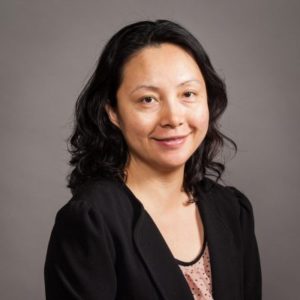Our body’s natural line of defense against infection and disease, as well as cancer, is our immune system equipped with T cells, a type of white blood cell that determines how we react to foreign substances, or antigens, in the body. While we have an arsenal of T cells to protect us from these various infections, some people lack certain T cells or simply do not have enough to fight off infections, such as the flu or HIV, or defend against the body’s own mutated cancer cells.

Understanding the diversity of T cells and which antigens they target can provide insight into developing personalized immunotherapy to help those patients with weak spots or gaps in their T cell community. Jenny Jiang, Peter and Geri Skirkanich Associate Professor of Innovation in Bioengineering, is characterizing this diversity.
Jiang recently received a Cancer Research Institute’s (CRI) Lloyd J. Old STAR grant to support her research on this topic. The CRI STAR grant identifies mid-career “Scientists TAking Risks” in innovative cancer immunotherapy research areas, providing freedom and flexibility to pursue high-risk, high-reward research with financial support of $1.25 Million over the course of five years.
Jiang spoke with CRI science writer Arthur Brodsky about her research and how the STAR grant will support it.
“In our studies of healthy individuals, who have some natural immune protection against commonly encountered viruses like the flu, we noticed that not everyone has T cells that cover all the possible antigens,” says Jiang. “There are differences in the number and types of flu-targeting T cells that each individual has. For some “exotic” antigens, like those of HIV for example, although the general population doesn’t actually have exposure to them, they should still have a very low level of minimum T cells that can offer some protection from possible future infection. So that part of our T cell arsenal acts as a safety net. But some individuals may completely lack those T cells. In those cases, as you can imagine, those people will have a hard time overcoming a future infection.”
Jiang describes how this is similar to how our bodies prevent cancerous tumor growth.
“The same principles apply, in a sense, to people with cancer. Not all patients have an adequate T cell repertoire to protect them from all possible cancer antigens or all the mutations that cancer might express,” she says. “In the case of cancer, if a patient lacks some cancer antigen-targeting T cells, then adoptive cell therapy may actually help them, by providing them with T cells that target their cancer. These would be their own T cells, that we enhance and equip with the right T cell receptors to target and eliminate their particular tumor.”
With Jiang’s work on the fundamentals of T cell behavior and diversity in individuals, the next step is to develop therapies for patients who lack sufficient T cells.
“Some cancer antigens—usually derived from the “driver” genes that promote cancerous behavior—are shared among different patients,” says Jiang. “If we discover T cells that recognize those shared driver mutations, then off-the-shelf versions of those T cells can be made in advance, so they’ll be ready for patients who have that mutation as soon as they’re needed.”
“But, most patients’ tumor antigens are unique, and that makes it very challenging to do a case-by-case study,” she says. “That’s why we’re analyzing hundreds of different antigens in parallel and in a high throughput manner, looking at all the individual T cells. Overall, we hope that our technology fills this technical gap, so that we can speed up the processes involved in developing personalized T cell therapies.”
Read the full interview on the CRI blog.
